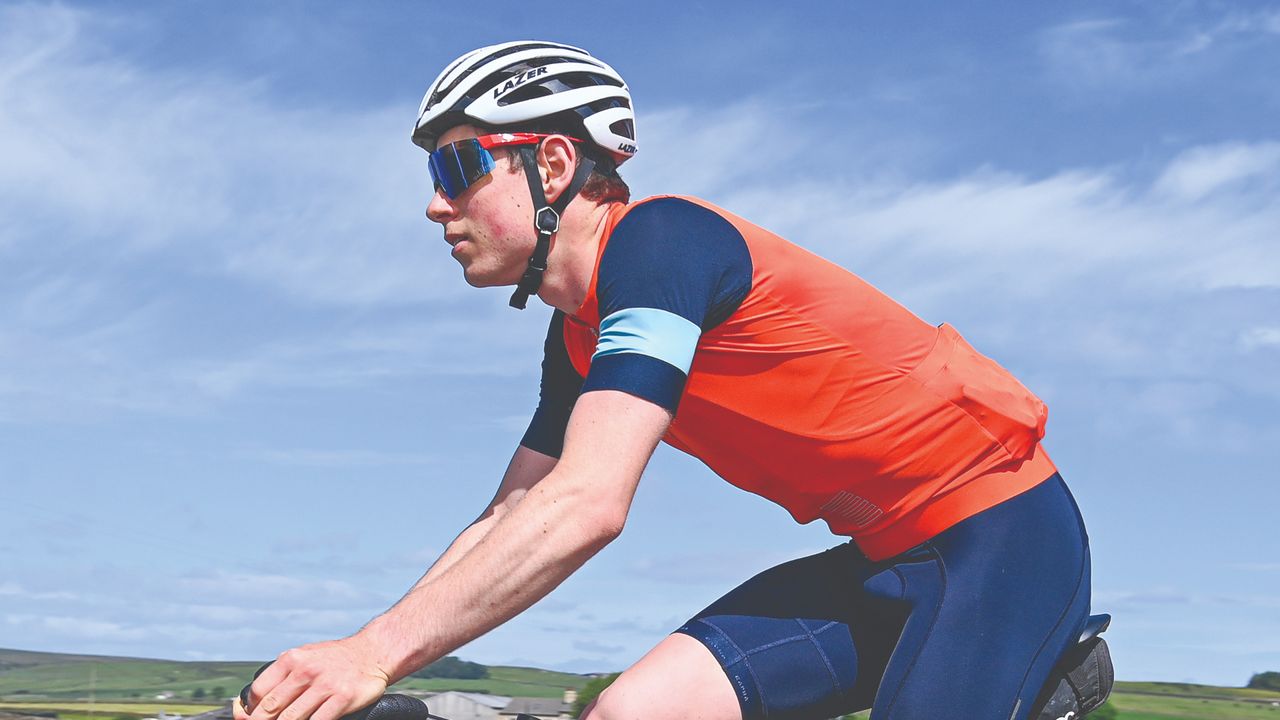Ask a cycling coach: how to taper for 'big goal' long events?
The hard work has been done, and now it’s time to turn those rain-soaked winter miles into sun-splashed summer smiles.


In order to optimise your performance, to add the frosting to your lovingly baked fitness cake, it’s prudent to have a little downtime, a chance for your newly formed muscle fibres to reflect on past work and the job before them. Yes, welcome to the taper - a period of reduced training in the lead-up to a goal event. And today, we’re looking at the best way to taper, or deload, before long races or endurance events.
What are the benefits of tapering?
Tapering before an endurance event can be very beneficial, but it requires a clear understanding of its purpose: to help you recover and avoid the temptation of last-minute ‘panic training’.
I’ve seen many riders start tapering, feel fantastic, and then overdo it, leading to negative results. Many coaches liken tapering to a game of Blackjack – risky if not managed correctly. By strategically reducing training volume and intensity in the days or weeks leading up to an event, tapering optimises performance through improved physiological adaptations, such as increased muscle strength, enhanced endurance and mental readiness. Effective tapering can lead to superior performance, lower injury risk, and a greater sense of freshness on event day.

Lifelong cyclist Jon is the founder, director and head coach of Trainsharp Cycle Coaching (trainsharp.co.uk)
The how of tapering
Start tapering two to three weeks before the event. The taper involves a careful but gradual reduction in your weekly training volume (hours). Three weeks out, reduce your volume by 20-30%; in the final week, cut the volume down to 50-60% of your highest training week.
Maintain the intensity of your workouts with shorter, high-intensity intervals and retain some efforts at goal pace for the event, but avoid long, exhausting sessions.
As you taper, you might feel a sense of extra energy, good mood and sprightliness on the bike. This can make it tempting to test the legs. Resist! Overdoing it now could easily backfire and leave you underperforming on the day – you must stay focused on why you are tapering. Treat your body like a coiled spring, gently compressing it now ready to let it go on the event – don’t leave your best set of event legs on the road in the weeks leading up to it.
During this phase, you should always prioritise sleep and full recovery, and don’t hesitate to take additional rest days if needed. Also consider carbohydrate loading three to four days leading into a long endurance event by consuming eight to 10 grams of carbohydrate for every kilogramme of body mass per day. Stay hydrated and avoid drastic changes in your diet. Your last long ride should be done about seven to 10 days before a long or multi-day race. This allows sufficient recovery while maintaining fitness.
Get The Leadout Newsletter
The latest race content, interviews, features, reviews and expert buying guides, direct to your inbox!
The hard work is done
For long endurance events, about 80% of your training should be endurance based – that’s Zone 1 and 2, with only 20% of your weekly workouts involving Zone 3 and higher. Once you’re one week out from the target event, it is too late to make further meaningful training gains. Therefore, backing off the training hours can have a positive effect, allowing you to hold the form you have worked so hard for, plus giving you a chance of being in the best possible shape on the day.
Tapering typically needs to be longer for longer events than it does for shorter events. For shorter events, a taper of one to two weeks may be sufficient. For a longer event, a longer taper of at least two weeks is necessary to ensure optimal performance and recovery.
'Big goal' event taper - step by step
Three weeks out
Begin your taper by reducing training volume by 20 -30%, while maintaining intensity.
Two weeks out
Further decrease volume by 40 -50%, focusing on the more meaningful quality workouts and maintaining intensity.
One week out
Reduce volume by 60 -70%, with short, high-intensity sessions to maintain sharpness – but not too high.
Three to four days out
Transition to very light, low-impact activities like easy cycling or swimming to keep muscles engaged without inducing fatigue.
One to two days out
Rest completely or engage in very light, non-strenuous activities such as gentle stretching or short walks.
Race day
Be confident that you have arrived at the event well-rested, fuelled, and mentally prepared to perform at your best - go get 'em!

Thank you for reading 20 articles this month* Join now for unlimited access
Enjoy your first month for just £1 / $1 / €1
*Read 5 free articles per month without a subscription

Join now for unlimited access
Try first month for just £1 / $1 / €1
Lifelong cyclist Jon is the founder, director and head coach of Trainsharp Cycle Coaching (trainsharp.co.uk)
-
 Lorena Wiebes surges to 100th career victory at Gent-Wevelgem
Lorena Wiebes surges to 100th career victory at Gent-WevelgemThe Dutch rider continued her near-unbeaten 2025 with SD Worx–Protime
By Alex Lancaster-Lennox Published
-
 “It is crazy”: Mads Pedersen takes historic victory at Gent-Wevelgem
“It is crazy”: Mads Pedersen takes historic victory at Gent-WevelgemThe Lidl-Trek rider's dominance marked the second successive men's winner in more than 30 years and becomes the seventh member of the Club Trois.
By Alex Lancaster-Lennox Published